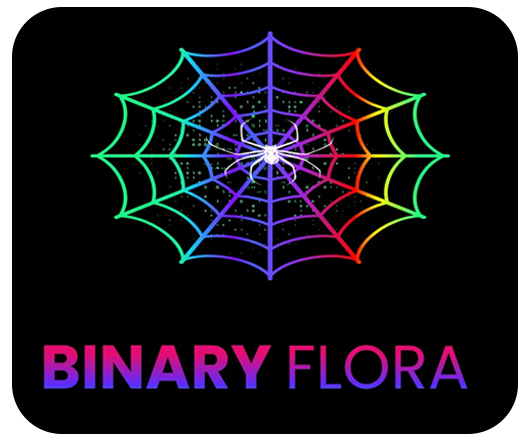
In digital marketing, attribution modeling refers to the process of assigning credit to various marketing channels and touchpoints that contribute to a conversion or desired outcome. It helps marketers understand which marketing efforts are driving results and allocate resources effectively. There are different attribution models available, each with its own approach to assigning credit. Here are some commonly used attribution models:

Last Click Attribution:
Last-click attribution is a method used in marketing and advertising to assign credit for a conversion or sale to the last interaction a customer had before completing the desired action. In other words, it gives all the credit for a conversion to the last touchpoint or marketing channel that led to the conversion.
For example, let’s say a customer sees an ad for a product on a website, then clicks on a social media post about the same product, and finally makes a purchase by directly visiting the company’s website. In last-click attribution, the sale would be attributed solely to the direct visit to the website, ignoring the earlier touchpoints.
Last-click attribution is a simple and straightforward way to measure the impact of different marketing channels and campaigns because it focuses only on the last touchpoint. However, it has limitations since it doesn’t consider the customer’s entire journey or the influence of other touchpoints along the way. It can overlook the earlier marketing efforts that may have played a significant role in driving awareness, interest, and consideration.
As a result, many marketers and advertisers have started exploring alternative attribution models, such as multi-touch attribution, which considers all touchpoints in the customer journey to provide a more holistic view of the effectiveness of various marketing channels and campaigns.
First Click Attribution:
First-click attribution is an alternative method used in marketing and advertising to assign credit for a conversion or sale to the first interaction a customer had before completing the desired action. Unlike last-click attribution, which gives all credit to the last touchpoint, first-click attribution attributes the conversion solely to the initial touchpoint or marketing channel that led to the customer’s engagement with the brand.
Here’s an example to illustrate first-click attribution: Suppose a customer discovers a product through an organic search result, then clicks on a paid advertisement related to that product, and finally makes a purchase by directly visiting the company’s website. In first-click attribution, the sale would be attributed solely to the organic search, ignoring the subsequent touchpoints.
First-click attribution can be useful in understanding the initial touchpoints that drive awareness and bring customers into the marketing funnel. It provides insights into the channels or campaigns that are effective in capturing the attention of potential customers and initiating their engagement.
However, similar to last-click attribution, first-click attribution has its limitations. It overlooks the influence of subsequent touchpoints and may not provide a complete picture of the customer’s journey or the impact of other marketing efforts that may have influenced the conversion. To gain a more comprehensive understanding of the customer journey and the effectiveness of various touchpoints, marketers often employ multi-touch attribution models that consider multiple interactions throughout the customer’s path to conversion. These models aim to provide a more accurate and holistic assessment of the contribution of each touchpoint in the customer’s decision-making process.
Linear Attribution:
Linear attribution is an attribution model used in marketing and advertising to distribute credit for a conversion or sale evenly across all touchpoints or interactions a customer had before completing the desired action. Unlike last-click attribution, which gives all the credit to the last touchpoint, linear attribution acknowledges the contribution of every touchpoint in the customer journey.
In linear attribution, the credit for a conversion is divided equally among all the touchpoints that occurred during the customer’s path to purchase.
For example, if a customer sees an ad, interacts with a social media post, receives an email, and then makes a purchase, each touchpoint would receive an equal share of the credit for the sale. This attribution model is based on the assumption that every touchpoint in the customer journey plays a role in influencing the final conversion. It provides a more balanced view of the impact of different marketing channels and campaigns, as it considers the cumulative effect of all touchpoints.
While linear attribution offers a fairer distribution of credit across touchpoints, it may not accurately reflect the actual influence or effectiveness of each interaction. Some touchpoints may have a more significant impact on driving conversions than others, and linear attribution fails to account for these variations.
As with any attribution model, it’s essential to understand its limitations and consider other factors when evaluating marketing performance and optimizing strategies. Many businesses combine multiple attribution models or employ more advanced techniques, such as data-driven attribution, to gain deeper insights into the effectiveness of their marketing efforts.
Time Decay Attribution:
Time decay attribution is an attribution model used in marketing and advertising to assign credit for a conversion or sale based on the time elapsed between touchpoints in the customer journey. It assumes that the closer a touchpoint is to the conversion event, the more influential it is in driving the desired action. In time decay attribution, the credit for a conversion is distributed among all the touchpoints in the customer journey, with the touchpoints closest to the conversion receiving a higher proportion of the credit. As the name suggests, the attribution value decays over time, with earlier touchpoints receiving less credit compared to later touchpoints.
For example, suppose a customer sees an ad for a product, later interacts with a social media post about the same product, receives an email, and finally makes a purchase. In time decay attribution, the touchpoints would receive credit in a weighted manner, with the touchpoint closest to the purchase receiving the most credit, and the earlier touchpoints receiving decreasing credit based on the time elapsed. This attribution model acknowledges the influence of touchpoints that occur closer to the conversion event, as they are considered more impactful in motivating the customer to take action. It recognizes that customer behavior and decision-making can be influenced by more recent interactions and thus adjusts the credit distribution accordingly.
Time decay attribution provides a more nuanced view of the customer journey compared to last-click or linear attribution. However, it still has limitations as it assumes that the influence of touchpoints decays uniformly over time and may not accurately capture the actual impact of each interaction.
It’s important to note that different attribution models serve different purposes, and choosing the most appropriate model depends on the specific goals, business context, and available data. Some organizations use a combination of attribution models or employ more advanced methodologies, such as algorithmic attribution, to gain deeper insights into the contribution of various touchpoints in the customer journey.

Position-Based Attribution:
Position-based attribution, also known as the U-shaped attribution model or the 40-20-40 rule, is an attribution model used in marketing and advertising to assign credit for a conversion or sale based on the position or significance of touchpoints within the customer journey. In position-based attribution, a fixed proportion of credit is assigned to three key touchpoints: the first touchpoint, the last touchpoint, and all the touchpoints in between. The typical distribution is 40% of the credit to both the first and last touchpoints, and the remaining 20% is divided among the intermediate touchpoints.
This attribution model acknowledges the importance of both the initial touchpoint, which introduces the customer to the product or brand, and the final touchpoint, which directly leads to the conversion. It also recognizes the influence of the touchpoints in the middle of the customer journey, which help nurture and guide the customer towards the desired action.
For example, suppose a customer’s journey involves seeing an ad for a product (first touchpoint), later interacting with a social media post about the same product, receiving an email, clicking on a paid search ad, and finally making a purchase (last touchpoint). In position-based attribution, 40% of the credit would be assigned to the initial ad, 20% each to the social media post, email, and paid search ad, and the remaining 40% to the final purchase.
By attributing credit to both the first and last touchpoints and giving importance to the touchpoints in between, position-based attribution offers a more balanced view of the customer journey compared to models like last-click attribution. It recognizes that multiple touchpoints can play a significant role in influencing a conversion.
However, it’s important to note that the distribution of credit in position-based attribution is based on a predetermined rule and may not accurately reflect the actual impact of each touchpoint in every customer journey. Organizations should consider their specific goals, data availability, and other factors when selecting an attribution model or consider employing more advanced techniques, such as data-driven attribution or algorithmic models, to gain a more precise understanding of the contribution of different touchpoints.
Data-Driven Attribution:
Data-driven attribution models use advanced algorithms and machine learning techniques to analyze large sets of data and determine the most influential touchpoints based on historical performance. These models consider multiple factors and provide more accurate attribution insights.
It’s important to note that attribution models are not one-size-fits-all. The most suitable model depends on your business goals, industry, customer behavior, and available data. Some organizations use multiple attribution models in combination to gain a comprehensive understanding of their marketing performance. Attribution modeling helps marketers make data-informed decisions, optimize marketing budgets, and identify the most effective channels and touchpoints in their customer journey. Attribution in digital marketing refers to the process of assigning credit to various marketing channels and
touchpoints for influencing a desired conversion or action. Here are some advantages of attribution.
Holistic view of the customer journey:
Attribution allows you to gain insights into the entire customer journey, considering all the touchpoints and interactions a user has with your brand before converting. It provides a more comprehensive understanding of how different channels and campaigns contribute to conversions.
Attribution allows you to gain insights into the entire customer journey, considering all the touchpoints and interactions a user has with your brand before converting. It provides a more comprehensive understanding of how different channels and campaigns contribute to conversions.
Data-driven decision making:
Attribution provides data-driven insights that help you make informed decisions about your marketing strategy. By understanding which channels and tactics are most effective at driving conversions, you can allocate your budget and resources more efficiently.
Optimization of marketing campaigns:
Attribution enables you to identify high-performing channels, campaigns, or specific elements within campaigns. With this knowledge, you can optimize your marketing efforts by investing more in successful channels and adjusting or discontinuing underperforming ones.
Budget allocation and resource optimization:
Attribution insights help in allocating your marketing budget effectively. You can distribute your resources based on the channels and campaigns that have the highest
